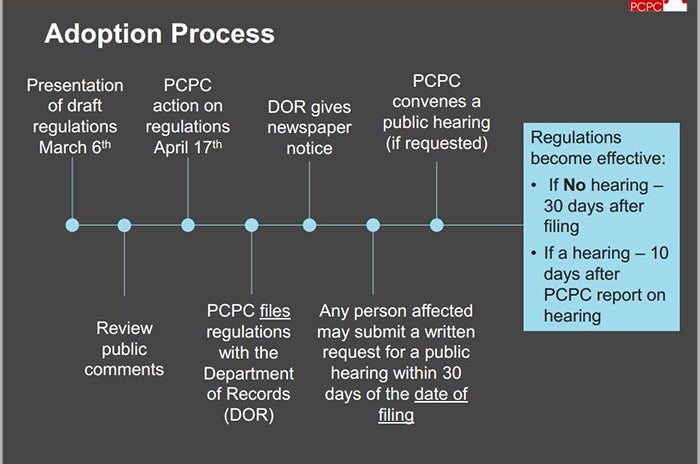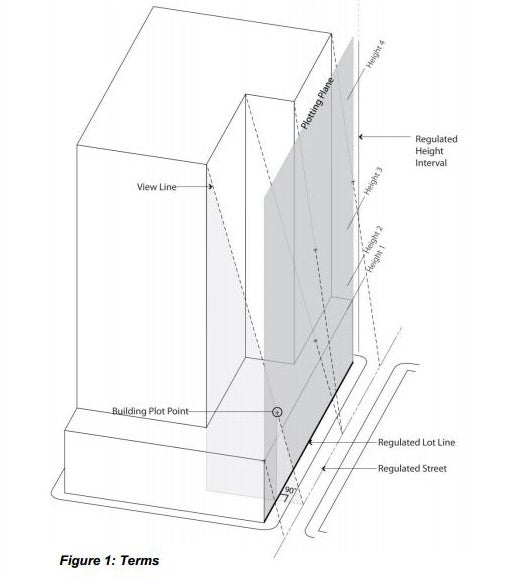Draft of new zoning regulations presented to Planning Commission
In a special meeting of the City Planning Commission at the Central Library Tuesday afternoon, deputy director of the PCPC Eva Gladstein presented a draft of amended regulations for the Commission in advance of the new zoning code taking effect this summer.
The draft, which is posted on zoningmatters.org, lays out specific procedures for implementing some new provisions in the zoning code. The regulations get specific on major additions such as Registered Community Organizations and Sky Plane Controls.
One important provision—Civic Design Review—merits a closer look here.
The draft PCPC regulations related to membership on the Civic Design Review Committee echo the regulations laid out in the zoning code, while adding some specific requirements. For example, one seat on the CDR committee is reserved for a member of a Registered Community Organization in the area affected by the proposed project. The new regulations require that RCOs nominate a representative at least one week prior to the scheduled CDR meeting, and that in the case of a project in the area of more than one RCO, the RCOs must collaborate to nominate one representative. If more than one representative is nominated, the Executive Director of the Commission chooses one.
The regulations also spell out submission requirements for projects that trigger CDR. These include, to name a few, photographs of the building site, ground floor plans, landscape plans, descriptions of sustainable design elements, and perspective renderings, all in digital PDF format as well as printed in color and bound. Developers of CDR-triggering projects must also submit digital or physical three-dimensional models of the proposed building in context.
The draft also further clarifies the purpose of CDR, and gives its committee members some leeway in employing their design and development expertise.
Eva Gladstein presents the draft regulations to the Planning Commission
“The Civic Design Review process does not lend itself to precise quantifiable certainty,” the draft reads, “requiring members of the CDR Committee to use their professional expertise and judgment in rendering advisory action.”
The review guidelines laid out in the PCPC draft are more concrete than those in the zoning code. Where the zoning code says generally what the CDR Committee members should look at, for example, the PCPC regulations spell out how they should look at it.
The review guidelines encourage certain characteristics of site design, building design, parking design, public open space, and sustainable design. For example, under site design: “Where feasible, the project should re-establish or continue the existing street and sidewalk grid.”
Under parking design: “Multi-level parking structures are preferred over large surface parking lots.”
Under building design: “Ground floor transparency should be maximized through generous fenestration.” (Translation: throw some windows on that doohickey.)
Under sustainable design: “Developments should incorporate existing on-site natural habitats and landscape elements into project design.”
The rewriting of the City’s decades-old zoning code was by no means an abstract process. The Zoning Code Commission attempted to account for the infinite variety of Philadelphia’s built environment while crafting legislation that would streamline and modernize citywide development procedures. But the draft PCPC regulations presented at Tuesday’s meeting determine the step-by-step process of enacting the new code’s goals and, ultimately, its success.
Contact the reporter at jaredbrey@gmail.com and follow him on Twitter @jaredbrey
WHYY is your source for fact-based, in-depth journalism and information. As a nonprofit organization, we rely on financial support from readers like you. Please give today.





